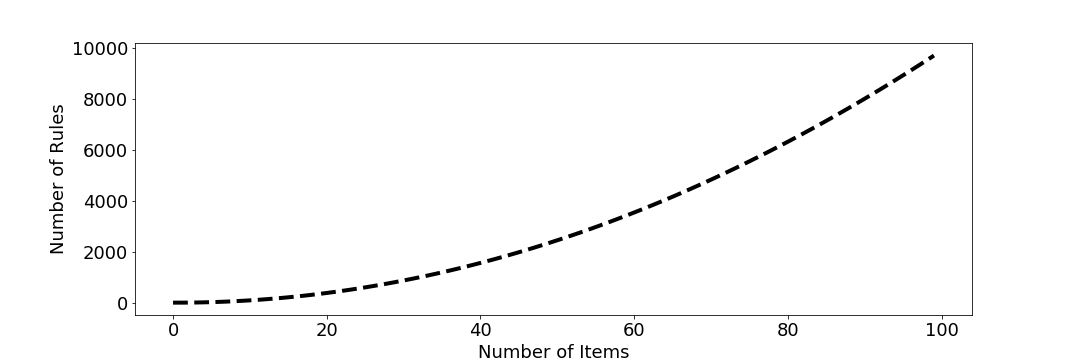Identifying association rules
Market Basket Analysis in Python

Isaiah Hull
Visiting Associate Professor of Finance, BI Norwegian Business School
Loading and preparing data
import pandas as pd
# Load transactions from pandas.
books = pd.read_csv("datasets/bookstore.csv")
# Split transaction strings into lists.
transactions = books['Transaction'].apply(lambda t: t.split(','))
# Convert DataFrame into list of strings.
transactions = list(transactions)
Exploring the data
print(transactions[:5])
[['language', 'travel', 'humor', 'fiction'],
['humor', 'language'],
['humor', 'biography', 'cooking'],
['cooking', 'language'],
['travel']]
Association rules
Association rule
- Contains antecedent and consequent
- {health} $\rightarrow$ {cooking}
- Contains antecedent and consequent
Multi-antecedent rule
- {humor, travel} $\rightarrow$ {language}
Multi-consequent rule
- {biography} $\rightarrow$ {history, language}
Difficulty of selecting rules
Finding useful rules is difficult.
- Set of all possible rules is large.
- Most rules are not useful.
- Must discard most rules.
What if we restrict ourselves to simple rules?
- One antecedent and one consequent.
- Still challenging, even for small dataset.
Generating the rules
- fiction
- poetry
- history
- biography
- cooking
- health
- travel
- language
- humor
Generating the rules
| Fiction Rules | Poetry Rules | ... | Humor Rules |
|---|---|---|---|
| fiction->poetry | poetry->fiction | ... | humor->fiction |
| fiction->history | poetry->history | ... | humor->history |
| fiction->biography | poetry->biography | ... | humor->biography |
| fiction->cooking | poetry->cooking | ... | humor->cooking |
| ... | ... | ... | ... |
| fiction->humor | poetry->humor | ... |
Generating rules with itertools
from itertools import permutations
# Extract unique items.
flattened = [item for transaction in transactions for item in transaction]
items = list(set(flattened))
# Compute and print rules.
rules = list(permutations(items, 2))
print(rules)
[('fiction', 'poetry'),
('fiction', 'history'),
...
('humor', 'travel'),
('humor', 'language')]
Counting the rules
# Print the number of rules
print(len(rules))
72

Looking ahead
# Import the association rules function
from mlxtend.frequent_patterns import association_rules
from mlxtend.frequent_patterns import apriori
# Compute frequent itemsets using the Apriori algorithm
frequent_itemsets = apriori(onehot, min_support = 0.001,
max_len = 2, use_colnames = True)
# Compute all association rules for frequent_itemsets
rules = association_rules(frequent_itemsets,
metric = "lift",
min_threshold = 1.0)
Let's practice!
Market Basket Analysis in Python

